
The island of Sumatra, in the Country of Indonesia

The far left large island is Sumatra, where the Batak reside.

Introduction
This story is a very small snapshot of how the Gospel entered and took root among the closely related ethnic groups that inhabit the Indonesian province on the island of Sumatra, now known as North Sumatra. Those ethnic groups have collectively come under a general heading, which today is known as the Batak.
The Batak were at one time cannibalistic and followed various forms of witchcraft and animism. Today the Batak people have become a remarkable testimony to the grace and mercy of God.
Even with a huge movement having taken place among the Batak, the island of Sumatra, with its population of 52 million people, is still considered to be the most unreached island in the world. For centuries missionaries have found the people of that island to be extremely hostile, and even today, the most radical elements of Islam can be found on Sumatra.
Some of the First Missionaries Were Eaten
In 1833, the American Board of Commissioners for Foreign Missions sent two pioneer missionaries to the island of Java: Samuel Munson and Henry Lyman.
Upon their arrival in Batavia (now Jakarta), and evidently after settling their families in homes, Munson and Lyman left them behind as they set sail for Padang on the west coast of Sumatra in April, 1834. From Padang they moved up the coast to Sibolga where they made plans to move inland to the areas where the Batak resided.
On Monday, June 23, 1834, Munson and Lyman, accompanied by “an interpreter, a cook, two natives and ten coolies,” set out on their journey inland. Having encountered friendly Bataks, they spent nights in their villages. One friendly radja (village chief) warned them about going further till he had first determined if it was safe for them. The missionaries disregarded that advice, and they continued their journey.
On the evening of June 28, 1834, they came upon a barricade that was defended by armed men. Then there was an assault made by two hundred armed Bataks from the side and rear. The coolies and interpreter fled into the jungle. It was then that Lyman was shot and Munson was killed with a spear. “The bodies of the two missionaries were taken to the village of Si Sakkas where they were consumed.”
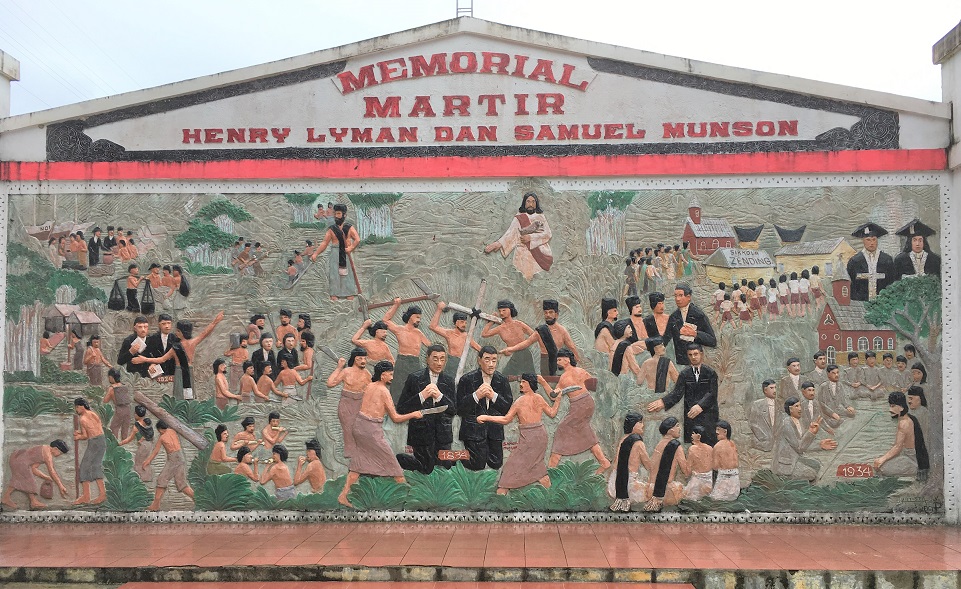
Martyr Memorial for Henry Lyman and Samuel Munson
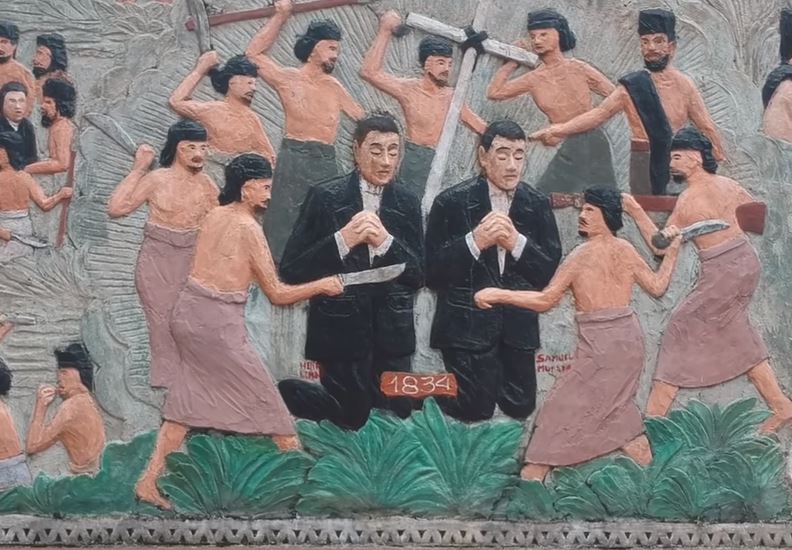
Close up of the above memorial, showing the attack against Henry Lyman and Samuel Munson
Apostle of the Batak
“The Blood of the Martyrs is the Seed of the Church” —Tertullian
On February 6, 1834, the same year the blood of Samuel Munson and Henry Lyman was spilt, Ludwig Nommensen was born in Nordstrand Schleswig. He was later to become known as “The Apostle of the Batak,” as it was through him and other missionaries of the Rhenish Mission Society of Wuppertal, Germany, that the Batak were evangelized.
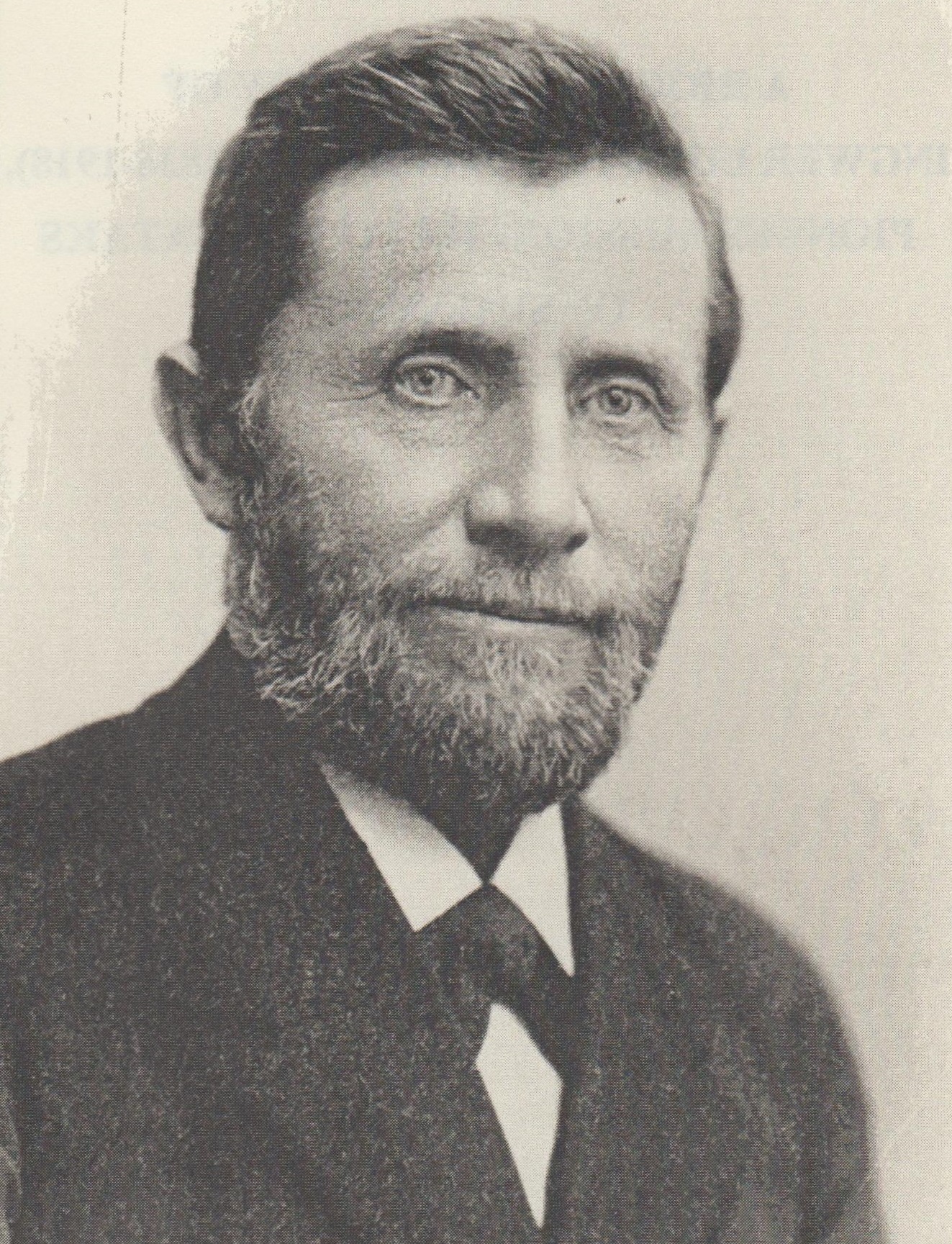 Ludwig Nommensen (1834 – 1918)
Ludwig Nommensen (1834 – 1918)
What Happened
“I begin a battle here which the Lord Jesus has already won long ago.” –Ludwig Ingwer Nommensen
In 1862, Ludwig Nommensen, of the German Lutheran Rhenish Missionary Society, began working among the Toba Batak people.
Nommensen settled among the Toba Batak and baptized the first converts in 1865. This was in the area of Sipirok of North Sumatra.
Together with the missionaries P.H. Johannsen and A. Mohri, Nommensen withstood the opposition of the local animist shaman and their efforts to prevent the spread of the Gospel.
After seven years of evangelistic work, the Batak Christians numbered 1,250 souls. Ten years later–in 1881–the numbers had increased to about 6,250. In 1918, there were 185,731 Christians in the region of North Sumatra.
Today, the church established by Nommensen is the largest Christian denomination in Indonesia–the Huria Kristen Batak Protestant Church (HKBP), with a baptized membership numbering around 4 million.
In 1885 Nommensen moved north, pioneering in the Lake Toba region, and some years later he expanded the work to the Simelungun Batak. He consolidated the work by establishing advanced schools, hospitals, and a theological seminary.

The areas where Ludwig Nommensen worked among the Batak.
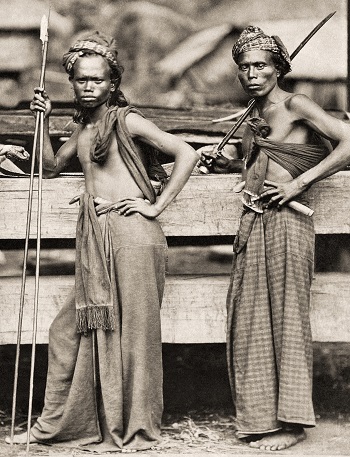
Batak Warriors
Results of the Revival
►In 1868, a local seminary for the education of teachers was opened in Sipirok.
►In 1877 a seminary for the education of preachers was built in Pansur Napitu.
►In 1885, the first Batak ministers were ordained in Pearaja Tarutung, where the HKBP headquarters is still located today.
►In 1889, the Rhenish Mission sent out Hester Needham who started the work with girls and women and later established the first Batak deaconesses.
►In the last quarter of the 19th century, more missionaries of the Rhenish Mission Society were sent out to the other Batak tribes (Angkola, Dairi, Simalungun, Karo, Pakpak).
►In 1922, the first General Synod of all Batak congregations was held. In 1931 HKBP became the first independent self-governing Christian body in what was then the Dutch East Indies.
►In 1977, Sekolah Tinggi Theologia (STT or “Theological Seminary”) HKBP split from Nommensen University.
►Tarutung and the Batak region remain the stronghold for the HKBP in the predominantly Muslim nation of Indonesia, although worshippers are found throughout Indonesia and the United States.
►The Batak ethnic group has a population of around 8.5 million, with 65% being Christian.
►The schools that were started by Nommensen’s team gave the Batak tremendous advantages in commerce and in teaching jobs throughout the Indonesian islands, as well as now in Indonesia’s national leadership.
►The Bible was translated (N.T. – 1869; O.T. – 1891).
►In 1954, long after the German mission society had left the island, Nommensen was remembered in the name of a new university—Nommensen University.
►Nommensen was the leading missionary among the Batak from 1864 to 1918 (54 years) and was moderator of the Rhenish Batak Mission from 1881.
►After Nommensen’s death, on May 23, 1918, the Batak church had 34 pastors, 788 teacher-preachers, and 180,000 members in more than 500 local churches. His published writings include translations into the Batak language of Luther’s Small Catechism (1874), the New Testament (1878), Bible Stories (1882), three booklets, and about forty shorter articles and contributions to mission journals.
►In 1940, after fifty years of work, there were only 5,000 members of the Karo Batak Church. By 1964, the number had grown to 30,000. Between June of 1966 and November of 1967, there were 25,000 converts added during a revival.
►The Toba Batak churches in 1967 had 819,000 in membership, with another 85,000 Simalungun Bataks and 50,000 Karo Bataks.
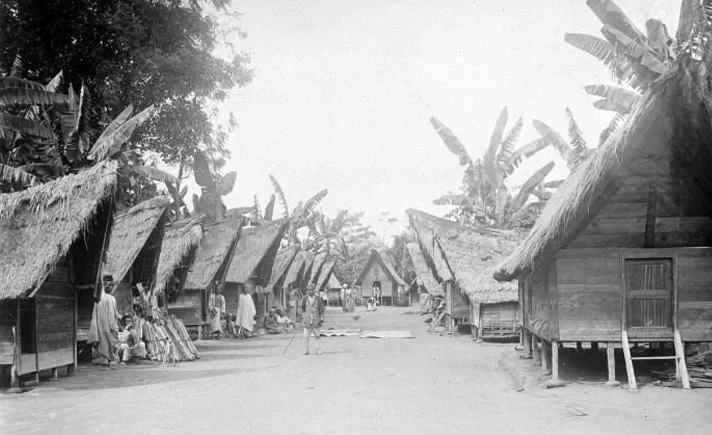
Batak Village
Sources
►A Biographical Study of Ingwer Ludwig Nommensen by Martin E. Lehmann
►Batak by Encyclopedia.com
►Batak Christian Protestant Church by Wikipedia
►Evangelical Awakenings in The South Seas by J. Edwin Orr
►‘God First,’ or Hester Needham’s Work in Sumatra Her Letters and Diaries Arranged by Mary Enfield
►Henry Lyman by Wikipedia
►Nommensen, Igwer Ludwig by Boston University School of Theology
►Samuel Munson by Wikipedia
►Samuel Munson & Henry Lyman by Yohanes52
►Sejarah Munson & Lyman Masuk ke Tanah Batak by Majulah Taput
►Story of Ludwig Nommensen by Bishop Bill Gafkjen
►The Legacy of Ingwer Ludwig Nommensen by Lothar Schreiner
►The Revival in Indonesia by Kurt E. Koch
►Utusan Damai di Kemelut Perang by Uli Kozok
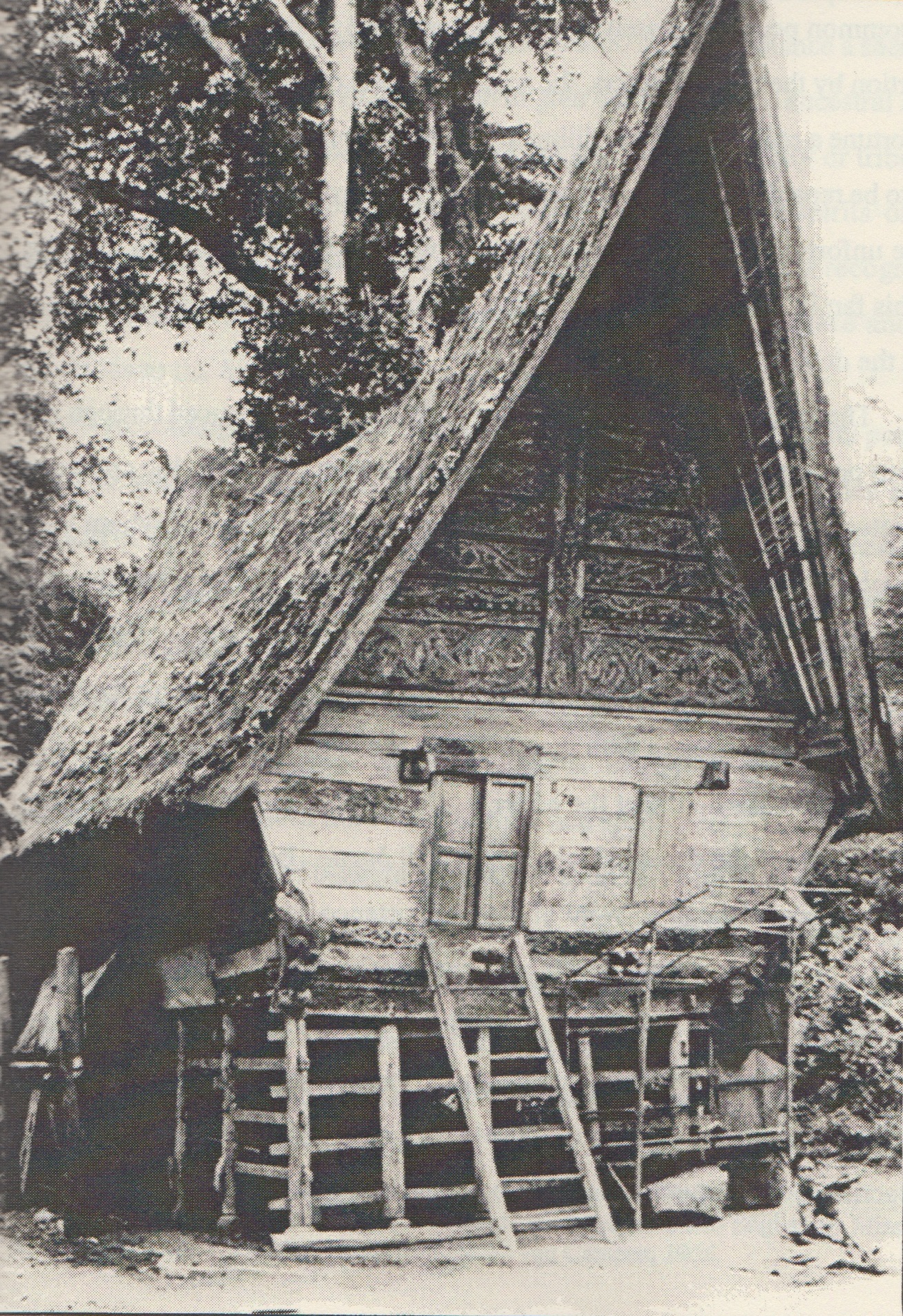
Batak House
Return to List of Revival Stories
Chet & Phyllis Swearingen:
Office: (260) 920-8248
romans1015@outlook.com
Beautiful Feet
P.O. Box 915
Auburn, IN 46706

